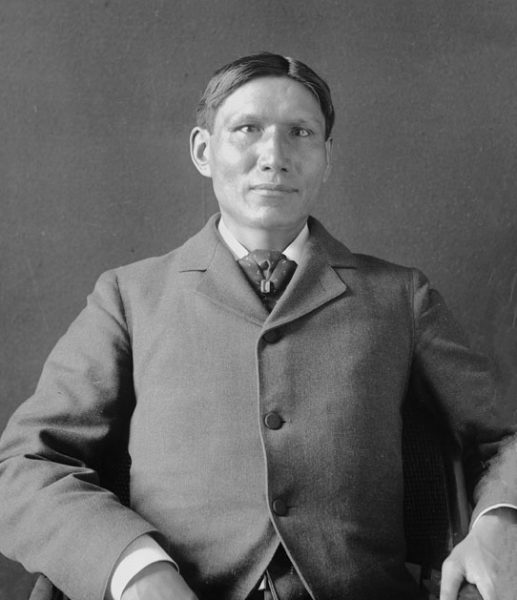
Charles Eastman, born Hakadah in 1858, was a Santee Dakota author, national lecturer, and activist for Native American rights. Eastman was born on a Santee Dakota reservation near Redwood Falls, Minnesota where he grew up under the care of his maternal grandmother after being separated from his family during the Dakota War of 1862.
When Eastman was a teenager, he was reunited with his father and oldest brother in South Dakota. This reunion marked his passage away from Native American tradition and into White American culture as his father had converted to Christianity and changed his name to Jacob Eastman, encouraging Charles to follow suit. When he converted as well, he took the name Charles Eastman, as we know him today.
Eastman attended Beloit College, Knox College, and Dartmouth College for his undergraduate degree before going on to medical school at Boston University in 1887. He graduated in 1889 or 1890 and began working as a physician for the Bureau of Indian Affairs Indian Health Service on the Pine Ridge Reservation in South Dakota. Here, he met his wife, fellow advocate and writer Elaine Goodale Eastman.
In many ways, Elaine Goodale Eastman was the driving force behind his writing. Charles was primarily a physician and advocate prior to their marriage, but she encouraged him to begin writing the stories of his childhood. She also served as his typist and editor, roles which many think she did not get enough credit for. Eastman herself was an author, and though she wrote seven books while the two were married hers received much less recognition.
In between writing, Eastman continued his activism in increasingly impressive ways. In between the years 1894-98, he established 32 Indian chapters of the YMCA across America. He developed other leadership programs and camps for American Indian youth and helped to recruit students for the Carlisle Indian Industrial School in Pennsylvania.
After his work with the YMCA and otherwise, Eastman moved on to politics at the national level. Eastman worked with three separate presidents (Theodore Roosevelt, Calvin Coolidge, and Franklin D. Roosevelt) in order to better the quality of life of American Indians.